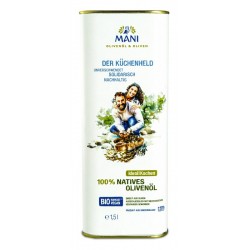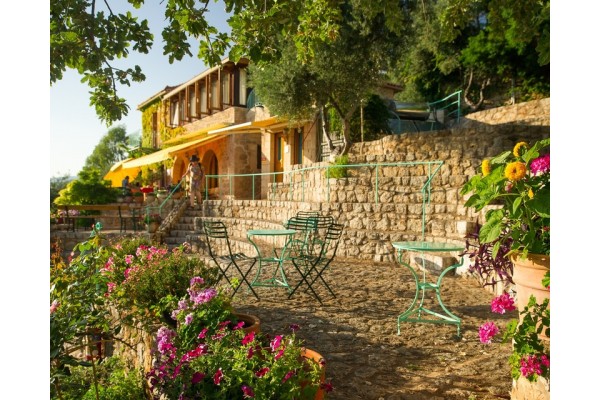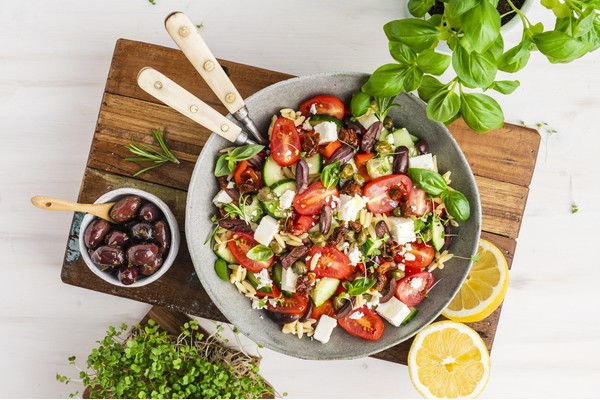How many degrees can you heat olive oil and can you also use the tasty vegetable oil for frying? While cooking and baking with olive oil has long been part of everyday life in Greece, in countries like Germany, Austria and Switzerland it is primarily used in cold dishes. Olive oil is actually ideal for roasting, baking and frying. With up to over 90% heat-resistant fatty acids, olive oil is a real hit!
How high can you heat olive oil?
Most olive oils can be heated up to about 180 °C without any problems. Why exactly 180°C? This is due to the so-called smoke point. The smoke point is the temperature at which an oil begins to burn - i.e. the liquid elements “evaporate”. This temperature should never be exceeded. When burning, oils not only lose their taste and nutrients, unhealthy and sometimes even carcinogenic substances can also form. The smoke point of an oil depends on the composition of the fatty acids and therefore differs from oil to oil. For most olive oils it is around 180°C. Basically, the lower the proportion of polyunsaturated fatty acids, the higher the smoke point and the more heat-resistant the oil is. Monounsaturated fatty acids are significantly more stable when exposed to heat than polyunsaturated - this makes olive oil an extremely stable kitchen partner.
MANI kitchen tip: You can also prevent burning by first heating the empty pan and only adding the olive oil to the pan just before the food is to be fried!

Virgin olive oil can be heated in a pan up to approx. 180°C
Which olive oil to use for cooking
Native olive oils are excellent for roasting and frying - with the exception of searing at temperatures higher than 180°C. But not every olive oil has the same hot temperament … So which olive oil can you heat up to what temperature?
Cold pressed olive oil
Native and extra native - natural - olive oils are cold-pressed. An olive oil may be labeled “cold pressed” - actually extracted cold - only if it was produced at below 27°C. Due to the careful extraction the valuable flavors and accompanying substances are preserved, but the sensitivity to heat also increases. Accordingly, cold-pressed olive oils should not be heated above 180 °C. For comparison: Sunflower oil can withstand a maximum of 140 °C and rapeseed oil around 170 °C.
Below 180°C, however, virgin olive oil is a real kitchen hero - thanks to the variety of flavors, vitamins and monounsaturated fatty acids! A regular consumption can have a positive effect on cholesterol levels, high blood pressure or chronic inflammation values, among other things, and the high proportion of polyphenols and vitamin E protects the cells from oxidative stress. Particularly high-quality extra virgin olive oils also contain natural antioxidants that further increase heat resistance.

Virgin olive oil can be heated up to 180°C and can therefore be used in a variety of ways
Refined olive oil
Refined olive oil is obtained in a chemical production process at temperatures above 100°C. The chemical process and the high temperatures produce pollutants that are removed again by refining - a kind of cleaning. However, refining not only cleans the oil of harmful substances, but also of a large part of its natural vitamins, colorings and aromas. The bottom line is that what remains is almost exclusively pure fat. Not the first choice in salads, but can be heated up to approx. 230 °C. However, it is not recommended to use it for cooking due to its low nutrients.
Conclusion
Olive oil can be boiled, baked and even deep-fried - it's not without reason that Greek fries taste extraordinarily fresh and fruity! When buying and using an olive oil for frying and frying, the following should be considered:
- Composition: High monounsaturated content fatty acids
- Smoke point rule: Virgin olive oil is not Heat to over 180 °C and put into the preheated pan just before the fried food!
- All or nothing: The fried food should be fully submerged in olive oil - pat gently with an absorbent cloth before serving
- Once, not twice please: Never use the same oil for several frying or frying inserts!
- Quality: You don't fry just anything, so why fry with just ”any” oil ? Choosing a quality oil is critical to health and taste. Virgin and extra virgin olive oil also have protective antioxidants!
While the fruity MANI extra virgin olive oil, Selection as a kitchen classic watching over the world of salads, the MANI 100% virgin olive oil popular due to its milder taste - and therefore the ideal partner for hearty cooking fun and creative desserts.


















